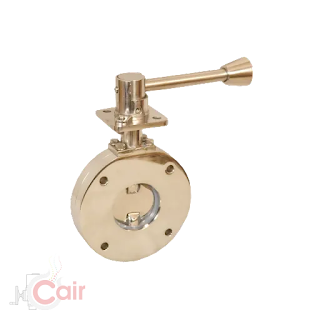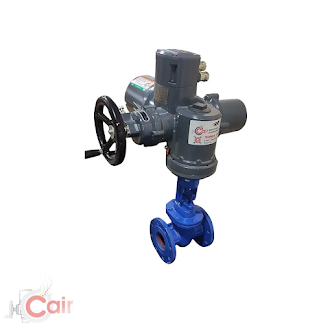The Many Different Types of Sluice Valves and Their Uses
The Different Types of Sluice Valves
Sluice or gate valves are essential in many plumbing, irrigation, and industrial systems. They control the flow of fluids, gasses, and other substances by opening or closing a gate within the valve body. Several different types of sluice valves are designed for specific applications.
One type of sluice valve is the rising stem valve, which features a stem that rises and lowers as the gate opens and closes. This type of valve is commonly used in water and wastewater systems and oil and gas pipelines.
Another type of sluice valve is the non-rising stem valve, which has a gate that moves up and down without changing the position of the stem. Non-rising stem valves are often used in applications where space is limited, such as underground or in tight spaces.
Parallel slide valves, also known as double disc valves, have two gates that move in parallel to control fluid flow. These valves are commonly used in industrial applications, such as chemical and petrochemical plants.
As the name suggests, Knife gate valves have a sharp-edged gate that cuts through the fluid, making them ideal for applications where the transported substance contains solids or fibres. These valves are commonly used in wastewater treatment plants and pulp and paper mills.
In conclusion, choosing the right type of sluice valve is crucial to ensure efficient and effective flow control in plumbing, irrigation, and industrial systems. The different sluice valves available provide options for various applications and requirements.
What is the Purpose of a Sluice Valve?
Sluice valves, also known as gate valves, are essential in controlling the flow of fluids, gases, and other substances in plumbing, irrigation, and industrial systems. They consist of a valve body with a gate or disc that can be raised or lowered to regulate material flow through the system.
The primary purpose of a sluice valve is to provide a way to start, stop, or regulate the flow of fluids or gasses. By opening and closing the gate or disc, the valve can allow material to pass through or restrict it entirely. This feature makes them ideal for applications requiring precise fluid or gas flow control, such as in chemical processing plants or water distribution systems.
Another critical purpose of a sluice valve is to prevent backflow. Backflow occurs when the flow of liquid or gas reverses direction, potentially causing contamination or damage to the system. Sluice valves can prevent backflow by closing the gate or disc tightly when the system is not in use.
Additionally, sluice valves can isolate sections of the system for maintenance or repair. By closing the valve, technicians can work on a specific part of the system without affecting the material flow in other areas.
In conclusion, the primary purpose of a sluice valve is to provide precise control of fluid or gas flow while preventing backflow and enabling maintenance and repairs. They are critical components in plumbing, irrigation, and industrial systems, and choosing the right type of valve for a specific application is crucial for optimal system performance.
Which Type of Sluice Valve is Right for My Application?
Choosing the right type of sluice valve for a specific application is crucial to ensure optimal performance and efficiency. Several factors to consider when selecting a sluice valve include the type of material being transported, the system's pressure and temperature, and the required flow rate.
For applications that involve transporting water or other fluids with minimal solid content, rising stem or non-rising stem valves are a good choice. Rising stem valves are often used in municipal water systems, while non-rising stem valves are suitable for underground installations or other locations with limited space.
For applications that involve fluids with high solid content, such as wastewater treatment or pulp and paper processing, knife gate valves are the best option. These valves feature a sharp-edged gate that can cut through fibrous or solid materials, ensuring optimal flow control.
Parallel slide valves are a good choice for applications that require precise flow control, such as chemical processing plants. They feature two gates that move in parallel, allowing optimal flow rate control.
For applications that require high-pressure or high-temperature fluid or gas transport, wedge gate valves are a good option. These valves can withstand extreme conditions and provide reliable, long-lasting performance.
In conclusion, selecting the right type of sluice valve for a specific application requires careful consideration of several factors, including the material being transported, the system's pressure and temperature, and the required flow rate. By choosing the right valve, you can ensure optimal system performance, reduce maintenance costs, and extend the lifespan of your equipment.
How to Install a Sluice Valve
Installing a sluice valve is a straightforward process, but it requires careful attention to detail to ensure optimal performance and reliability. Here are the basic steps involved in installing a sluice valve:
Choose the right location: Determine the optimal location for the valve based on the specific application, such as when the system can be isolated for maintenance or repair.
Prepare the pipe: Cut the pipe to the required length, ensuring the ends are clean and debris-free.
Install the valve: Place it between the two pipe sections and secure it using bolts or other fasteners. Make sure the valve is aligned correctly and the gate or disc is in the closed position.
Connect the valve: Connect the valve to the rest of the system using the appropriate fittings and connectors.
Test the valve: Once installed, ensure it works correctly. Open and close the valve several times to ensure that the gate or disc is moving freely and that there are no leaks or other issues.
Maintain The Valve: Regular maintenance ensures optimal performance and reliability. Follow the manufacturer's recommended maintenance schedule, including lubricating the valve, inspecting the gate or disc for wear, and checking for leaks or other issues.
In conclusion, installing a sluice valve requires careful attention to detail and adherence to the manufacturer's instructions. By choosing the right location, preparing the pipe correctly, and regularly testing and maintaining the valve, you can ensure optimal performance and reliability of your system.
How to Maintain a Sluice Valve
Maintaining a sluice valve is crucial to ensure optimal performance and longevity of the valve and the entire system. Proper maintenance includes regular inspection, cleaning, lubrication, and repair. Here are some steps involved in maintaining a sluice valve:
Regular Inspection: Regular inspection is crucial to ensure the valve is in good condition and working correctly. Inspect the valve for signs of wear and damage, such as cracks, leaks, or corrosion. Also, check the gate or disc to ensure it moves freely and is not stuck.
Cleaning: Sluice valves can accumulate dirt, debris, and other contaminants over time, affecting their performance. Regular cleaning is essential to remove any buildup of dirt or debris that could interfere with the valve's operation. Use mild detergent and water to clean the valve and surrounding area, ensuring the valve is closed during cleaning.
Lubrication: Lubrication is necessary to ensure the valve operates smoothly and efficiently. Apply lubricant to the valve stem or actuator, taking care not to over-lubricate, as this can attract dirt and debris.
Repair: If the valve shows signs of wear or damage, repair it immediately to prevent further damage or failure. Follow the manufacturer's instructions for repairing the valve, and use only approved replacement parts.
Test The Valve: Once maintenance is complete, test the valve to ensure it works correctly. Open and close the valve several times, and check for leaks or other issues.
In conclusion, regular maintenance is crucial to ensure a sluice valve's optimal performance and longevity. Inspecting, cleaning, lubricating, repairing, and testing the valve regularly can prevent costly downtime, extend the valve's lifespan, and ensure the entire system operates smoothly and efficiently.




Comments
Post a Comment